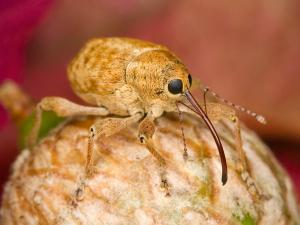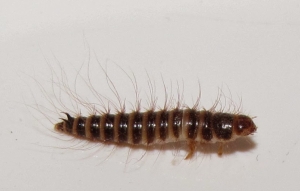 The US Food and Drug Administration regulates contaminants in food including insects and insect parts. As discussed in a previous post some contamination of our food by insects is unavoidable. However, the amount of contamination can be limited by good processing practice. The FDA created the Food Defect Action Level as a legal standard that processors must meet through good sanitary practices. Contamination above the allowable level is considered evidence of unsanitary processing conditions. Products processed under unsanitary conditions can be recalled and fines can be imposed. Products that do not meet the standard cannot be mixed and diluted in order to meet the standard. If a product deemed unsanitary is mixed with a sanitary product the new product is still deemed unsanitary even if the insect parts are now with the defect standard.
The US Food and Drug Administration regulates contaminants in food including insects and insect parts. As discussed in a previous post some contamination of our food by insects is unavoidable. However, the amount of contamination can be limited by good processing practice. The FDA created the Food Defect Action Level as a legal standard that processors must meet through good sanitary practices. Contamination above the allowable level is considered evidence of unsanitary processing conditions. Products processed under unsanitary conditions can be recalled and fines can be imposed. Products that do not meet the standard cannot be mixed and diluted in order to meet the standard. If a product deemed unsanitary is mixed with a sanitary product the new product is still deemed unsanitary even if the insect parts are now with the defect standard.
The regulations are available on the FDA website under Title 21, Subpart G: Defect Action Levels. The FDA issues guidelines in to accompany the regulation. The guidelines can be altered to meet changes. For example, a new invasive pest may cause additional unavoidable contamination and the guidelines adjusted accordingly. Or, new technology may greatly decrease the levels of contamination that can be obtained by good practice and the guidelines adjusted downward. Is it burdensome for processors to meet these regulations? Somewhat. However, having regulations and standards gives the public greater confidence in the food supply. Enforced standards prevent a race to the bottom with processors that don’t follow good practice undercutting the price of those conscientious processors who are using good practices. These regulations have widespread public support.
TITLE 21–FOOD AND DRUGS
CHAPTER I–FOOD AND DRUG ADMINISTRATION
DEPARTMENT OF HEALTH AND HUMAN SERVICES
SUBCHAPTER B–FOOD FOR HUMAN CONSUMPTION
PART 110 CURRENT GOOD MANUFACTURING PRACTICE IN MANUFACTURING, PACKING, OR HOLDING HUMAN FOOD
Subpart G–Defect Action Levels
Sec. 110.110 Natural or unavoidable defects in food for human use that present no health hazard.
(a) Some foods, even when produced under current good manufacturing practice, contain natural or unavoidable defects that at low levels are not hazardous to health. The Food and Drug Administration establishes maximum levels for these defects in foods produced under current good manufacturing practice and uses these levels in deciding whether to recommend regulatory action.
(b) Defect action levels are established for foods whenever it is necessary and feasible to do so. These levels are subject to change upon the development of new technology or the availability of new information.
(c) Compliance with defect action levels does not excuse violation of the requirement in section 402(a)(4) of the act that food not be prepared, packed, or held under unsanitary conditions or the requirements in this part that food manufacturers, distributors, and holders shall observe current good manufacturing practice. Evidence indicating that such a violation exists causes the food to be adulterated within the meaning of the act, even though the amounts of natural or unavoidable defects are lower than the currently established defect action levels. The manufacturer, distributor, and holder of food shall at all times utilize quality control operations that reduce natural or unavoidable defects to the lowest level currently feasible.
(d) The mixing of a food containing defects above the current defect action level with another lot of food is not permitted and renders the final food adulterated within the meaning of the act, regardless of the defect level of the final food.




 The US Food and Drug Administration regulates contaminants in food including insects and insect parts. As discussed in a
The US Food and Drug Administration regulates contaminants in food including insects and insect parts. As discussed in a 
